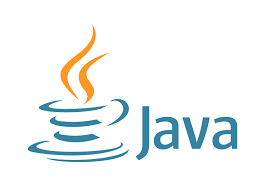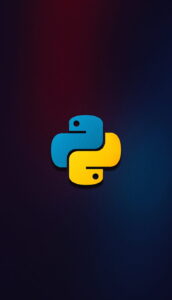What is Java?
Java is a high-level, versatile, and widely-used programming language known for its platform independence, which means that Java programs can run on different types of computer systems without modification. It was developed by James Gosling and his team at Sun Microsystems (now owned by Oracle Corporation) and was first released in 1995.

Features of Java
Platform Independence
Java programs are compiled into bytecode, which can be executed on any platform with a compatible Java Virtual Machine (JVM), allowing for cross-platform compatibility.
Object-Oriented
Java is designed as an object-oriented programming (OOP) language, promoting the use of classes and objects for modeling and organizing code.
Robust and Secure
Java includes features for robust error handling and memory management, making it resistant to crashes and memory leaks. It also has built-in security mechanisms to protect against unauthorized access and malware.
Multithreading
Java supports multithreading, enabling the creation of concurrent programs that can perform multiple tasks simultaneously, improving performance and responsiveness.
Rich Standard Library
Java comes with a comprehensive standard library (Java Standard Library or Java API) that provides pre-built classes and packages for various tasks like I/O, networking, data structures, and more.
Portability
Java’s platform independence and the “Write Once, Run Anywhere” (WORA) philosophy make it highly portable and adaptable to different systems.
Large and Active Community
Java has a vast and active developer community, which leads to extensive documentation, numerous libraries, frameworks, and tools available for various applications.
Backward Compatibility
Java places a strong emphasis on maintaining backward compatibility, ensuring that older Java applications can run on newer versions of the language.
Disadvantages of Using Java
Slower Execution Speed
Java applications can be slower in execution compared to natively compiled languages like C and C++ because of the intermediate bytecode interpretation by the JVM. However, just-in-time (JIT) compilation helps mitigate this issue.
Memory Consumption
Java applications can consume more memory due to the JVM overhead and garbage collection, which may affect performance in resource-constrained environments.
Learning Curve
Java’s strict syntax and object-oriented nature may pose a steeper learning curve for beginners, especially those new to programming.
Verbosity
Java code can be verbose, requiring more lines of code compared to some other languages to achieve the same functionality.
What is Python?
Python is a high-level, versatile, and interpreted programming language known for its simplicity, readability, and wide range of applications. It was created by Guido van Rossum and first released in 1991. Python is designed to be easy to understand and write, making it an excellent choice for beginners and experienced developers alike.

Features of Python
Readability
Python’s clean and simple syntax emphasizes readability and reduces the cost of program maintenance. It uses indentation to define code blocks, making it easy to understand and write.
High-Level Language
Python is a high-level programming language, abstracting low-level details, which simplifies development and makes it accessible to a broad audience.
Interpreted Language
Python is an interpreted language, allowing developers to write and execute code interactively. This enables rapid development and testing.
Cross-Platform Compatibility
Python is available for various operating systems, ensuring code portability across different platforms.
Dynamic Typing
Python is dynamically typed, meaning that variable types are determined at runtime. This provides flexibility but requires careful handling of data types.
Large Standard Library
Python includes a comprehensive standard library that covers a wide range of tasks, including file handling, data manipulation, networking, and more.
Extensive Ecosystem
Python has a vast ecosystem of third-party libraries and frameworks, such as Django (web development), NumPy (scientific computing), TensorFlow (machine learning), and more, which accelerates development.
Open Source
Python is open source, with an active and supportive community that contributes to its development, documentation, and third-party libraries.
Disadvantages of using Python
Performance
Python is an interpreted language, which can lead to slower execution speed compared to natively compiled languages like C and C++. This can be a drawback for CPU-intensive tasks.
Global Interpreter Lock (GIL)
Python has a GIL that restricts the execution of multiple threads in parallel, limiting the effective use of multicore processors in certain scenarios.
Memory Consumption
Python can consume more memory than some other languages due to its dynamic typing and memory management, which may affect performance in memory-constrained environments.
Not Suitable for Mobile App Development
While Python can be used for some mobile app development (e.g., with frameworks like Kivy), it’s not as commonly used as languages like Java or Swift for this purpose.
Less Suitable for Real-Time Systems
Python’s interpreted nature and garbage collection may not be suitable for real-time systems that require precise timing and predictability.
Global State and Mutable Defaults
Python allows mutable objects as default function arguments, which can lead to unexpected behavior if not handled carefully.
Java vs Python Which is Better?
The choice between Java and Python depends on your specific needs, project requirements, and personal preferences. Neither language is inherently “better” than the other; they have different strengths and are suitable for different types of applications. Here are some factors to consider when deciding between Java and Python:
Choose Java if
Performance is Critical
Java is generally faster than Python because it’s a statically-typed language with compilation to bytecode. If your application has stringent performance requirements, Java may be a better choice.
Scalability and Enterprise Applications
Java is a popular choice for building large-scale enterprise applications, web services, and server-side applications. It has robust support for multithreading and can handle high loads.
Strong Typing and Safety
Java’s static typing helps catch errors at compile-time, which can lead to safer and more robust code in large projects.
Android App Development
If you plan to develop Android apps, Java (along with Kotlin) is one of the primary languages used for Android app development.
Choose Python if
Ease of Learning
Python’s simple and readable syntax makes it an excellent choice for beginners. It’s known for its ease of learning and quick development.
Rapid Prototyping
Python’s concise code allows for rapid prototyping and development, making it suitable for projects with short timeframes.
Data Science and AI
Python is widely used in data science, machine learning, and artificial intelligence due to libraries like NumPy, pandas, TensorFlow, and scikit-learn.
Web Development
Python is used for web development with frameworks like Django and Flask, which simplify the creation of web applications.
Scripting and Automation
Python is a great choice for writing scripts and automating repetitive tasks, making it popular among system administrators and DevOps professionals.
Java Vs Python: What’s the Difference?
1.Syntax
Java
Java has a more verbose syntax with strict rules for semicolons, curly braces, and type declarations. It uses static typing, meaning variable types are declared explicitly.
Python
Python is known for its concise and readable syntax. It uses indentation (whitespace) to define code blocks and employs dynamic typing, where variable types are determined at runtime.
2.Compilation vs. Interpretation
Java
Java is a compiled language. Code is compiled into bytecode, which is executed by the Java Virtual Machine (JVM). This provides platform independence but requires a separate compilation step.
Python
Python is interpreted. Code is executed line by line by the Python interpreter. This offers quick development and testing but may be slower in execution.
3.Performance
Java
Java tends to be faster than Python due to its static typing, compilation, and the JVM’s optimizations. It is often used for performance-critical applications.
Python
Python is generally slower than Java because of its dynamic typing and interpreted nature. However, for most applications, the performance difference is negligible.
4.Use Cases
Java
Java is commonly used for building large-scale enterprise applications, web services, Android app development, server-side applications, and high-performance software.
Python
Python is popular in web development, scripting, automation, data analysis, machine learning, artificial intelligence, scientific computing, and prototyping.
5.Threading and Concurrency
Java
Java has robust support for multithreading and concurrent programming. It uses the concept of threads and provides tools for synchronized access to shared resources.
Python
Python has a Global Interpreter Lock (GIL) that limits the execution of multiple threads in parallel, affecting the effective use of multicore processors in certain scenarios.
6.Libraries and Frameworks
Java
Java has a wide range of libraries and frameworks for various domains, including Spring (web development), Hibernate (database access), and more.
Python
Python has a rich ecosystem of libraries and frameworks, such as Django and Flask for web development, NumPy and pandas for data manipulation, TensorFlow and PyTorch for machine learning, and more.
Conclusion
n conclusion, the choice between Java and Python depends on your project’s specific requirements, goals, and your personal preferences as a developer.
- Java is a statically typed, compiled language known for its performance, robustness, and extensive libraries. It’s well-suited for large-scale enterprise applications, Android app development, server-side applications, and high-performance software.
- Python is dynamically typed, interpreted, and renowned for its readability and simplicity. It excels in web development, scripting, automation, data analysis, machine learning, scientific computing, and prototyping.
FAQ’S
1.What is the main difference between Java and Python?
The main difference is that Java is a statically-typed, compiled language with strict syntax, while Python is dynamically-typed, interpreted, and has a more readable and concise syntax.
2.Which language is better for beginners, Java or Python?
Python is often recommended for beginners due to its simplicity and ease of learning. Java, with its stricter syntax, may have a steeper learning curve.
3.Which language is faster, Java or Python?
Java is generally faster than Python due to its compiled nature and static typing. However, for most applications, the performance difference may not be significant.
4.In which domains is Java commonly used?
Java is commonly used in large-scale enterprise applications, Android app development, server-side applications, and high-performance software.
5.What are Python’s primary use cases?
Python is popular in web development, scripting, automation, data analysis, machine learning, artificial intelligence, scientific computing, and prototyping.

